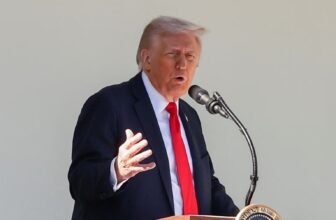SpaceX Takes Delivery of Hundreds of Tesla Cybertrucks as Sales Stall
SpaceX has begun taking delivery of hundreds of unsold Tesla Cybertrucks, with thousands more expected to follow, as Elon Musk seeks to manage a growing surplus of the stainless-steel electric pickup. The move highlights Tesla’s ongoing struggle to convert public fascination with the futuristic truck into actual sales.
Tesla’s Gigafactory in Texas, capable of producing up to 250,000 Cybertrucks annually, has been running well below that figure. Sales have fallen sharply, leaving the automaker with a mounting inventory. According to reports, Tesla has sold only around 20,000 Cybertrucks to date, a small fraction of its production potential.
Demand Fades for Tesla’s Boldest Vehicle Yet
When the Cybertruck was first revealed, it generated intense buzz for its unconventional angular design, stainless-steel body, and promises of high performance. But that early excitement has largely cooled.
Tesla’s second-quarter 2025 sales figures show just 4,306 Cybertrucks sold, down roughly 50% year over year. Once positioned as a symbol of Tesla’s innovation, the truck now sits in third place among electric pickups, trailing behind Ford’s F-150 Lightning and GMC’s Hummer EV.
The sharp decline reflects the growing competition in the EV truck market and consumer hesitation toward the Cybertruck’s radical styling and steep pricing. Despite Tesla’s efforts — including discounts and financing offers — demand continues to soften.
SpaceX, Starlink, and xAI to Receive Tesla’s Electric Pickup
To help offset the sales slump, Musk has turned to his other companies. SpaceX facilities in Boca Chica, Texas, where the Starbase launch site is located, have begun receiving truckloads of Cybertrucks. Additional shipments have been spotted at the Starlink satellite factory in Bastrop and xAI’s offices, Musk’s artificial intelligence venture.
Reports suggest these vehicles are being integrated into SpaceX’s operational fleet, replacing conventional internal combustion engine vehicles. The Cybertrucks will reportedly be used by SpaceX engineers and support teams to transport personnel and equipment around sprawling facilities.
This internal redistribution strategy helps Tesla reduce unsold inventory without slashing prices, while simultaneously supporting Musk’s sustainability goals by electrifying his companies’ vehicle fleets.
A Short-Term Fix for a Long-Term Problem
Industry observers view Musk’s decision as a practical, if temporary, response to Tesla’s overproduction problem. With Cybertruck sales falling below expectations, funneling vehicles into SpaceX and affiliated companies provides an outlet for excess supply while maintaining the brand’s visibility.
However, analysts also note that this move underscores a deeper issue — Tesla’s struggle to balance production with demand. The Cybertruck’s manufacturing process, which relies on expensive stainless-steel panels and complex assembly steps, has made it difficult for Tesla to offer competitive pricing.
Combined with the expiration of the $7,500 federal EV tax credit, the Cybertruck’s price point has become a deterrent for many buyers. Its unconventional look and premium cost have limited its appeal beyond Tesla’s most loyal customers.
Design and Cost Hurdles Hamper Broader Appeal
The Cybertruck’s design, though distinctive, remains a divisive factor. While it stands out in a market crowded with more traditional pickups, that uniqueness has come at a cost. Production delays, material challenges, and limited scalability have inflated manufacturing expenses.
As more established automakers like Ford, Rivian, and General Motors expand their electric truck offerings, Tesla finds itself squeezed between luxury and practicality. Competitors now offer trucks that blend familiar aesthetics with modern technology — an equation that appears to resonate more strongly with consumers.
Tesla’s marketing strategy, once built on exclusivity and innovation, is being tested as affordability and usability take precedence in the evolving EV landscape.
Cybertruck’s Future Hinges on Strategic Adjustments
The sales dip suggests that Tesla may need to revisit its approach to the Cybertruck — from pricing and production to design updates and customer outreach. Some industry analysts believe Tesla could eventually introduce scaled-down or more affordable versions to capture a wider market.
For now, SpaceX’s acquisition offers a partial reprieve. The deployment of Cybertrucks across Musk’s companies ensures that production continues without drastic cutbacks and that the vehicles remain operational in high-visibility environments. It also reinforces Tesla’s narrative of sustainability and innovation — even as consumer demand wavers.
Still, the move does little to address the broader challenge of convincing everyday drivers to embrace the Cybertruck. Until Tesla finds a way to balance its futuristic ambitions with mainstream expectations, its flagship pickup may remain more of a statement piece than a commercial success.
Tags: technology connectz







